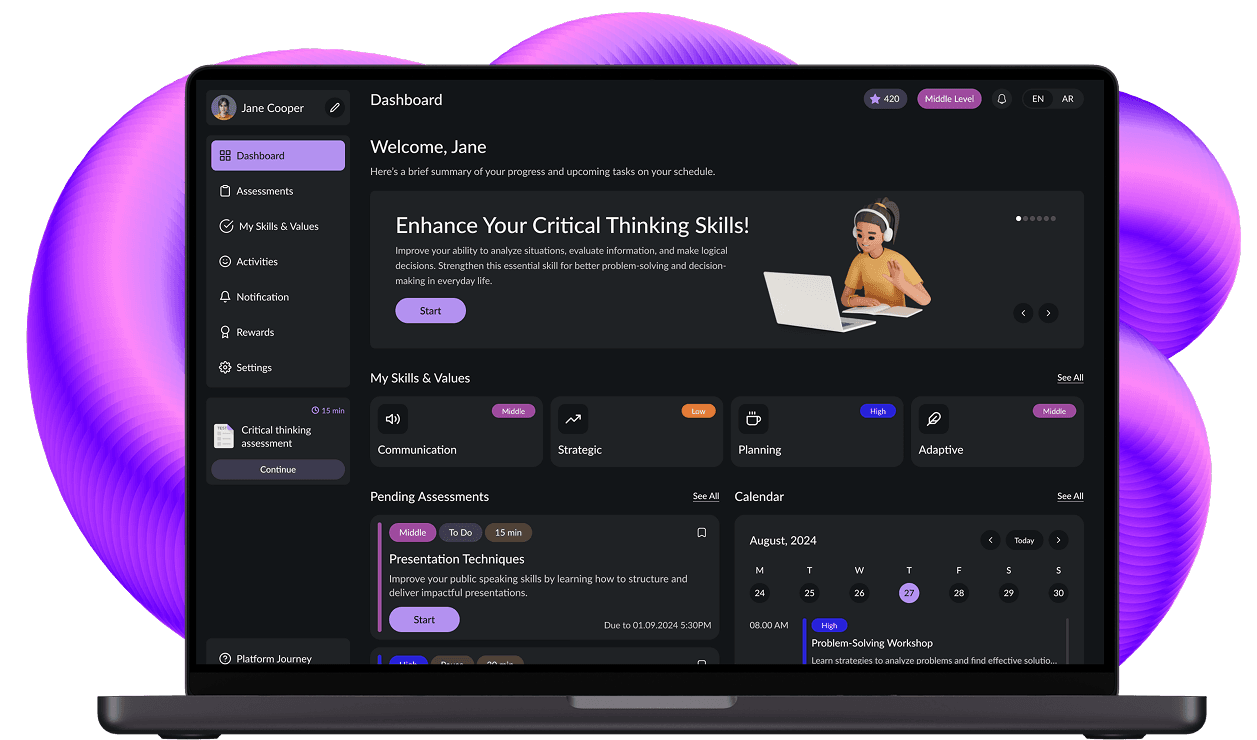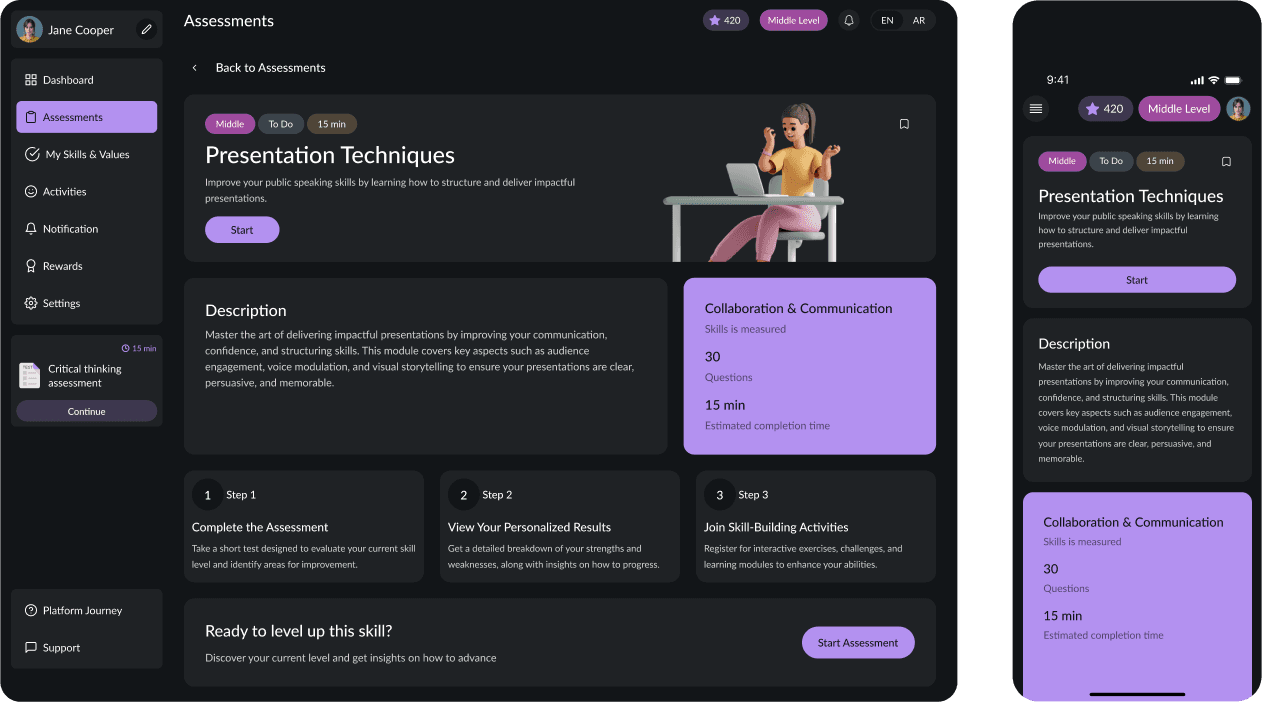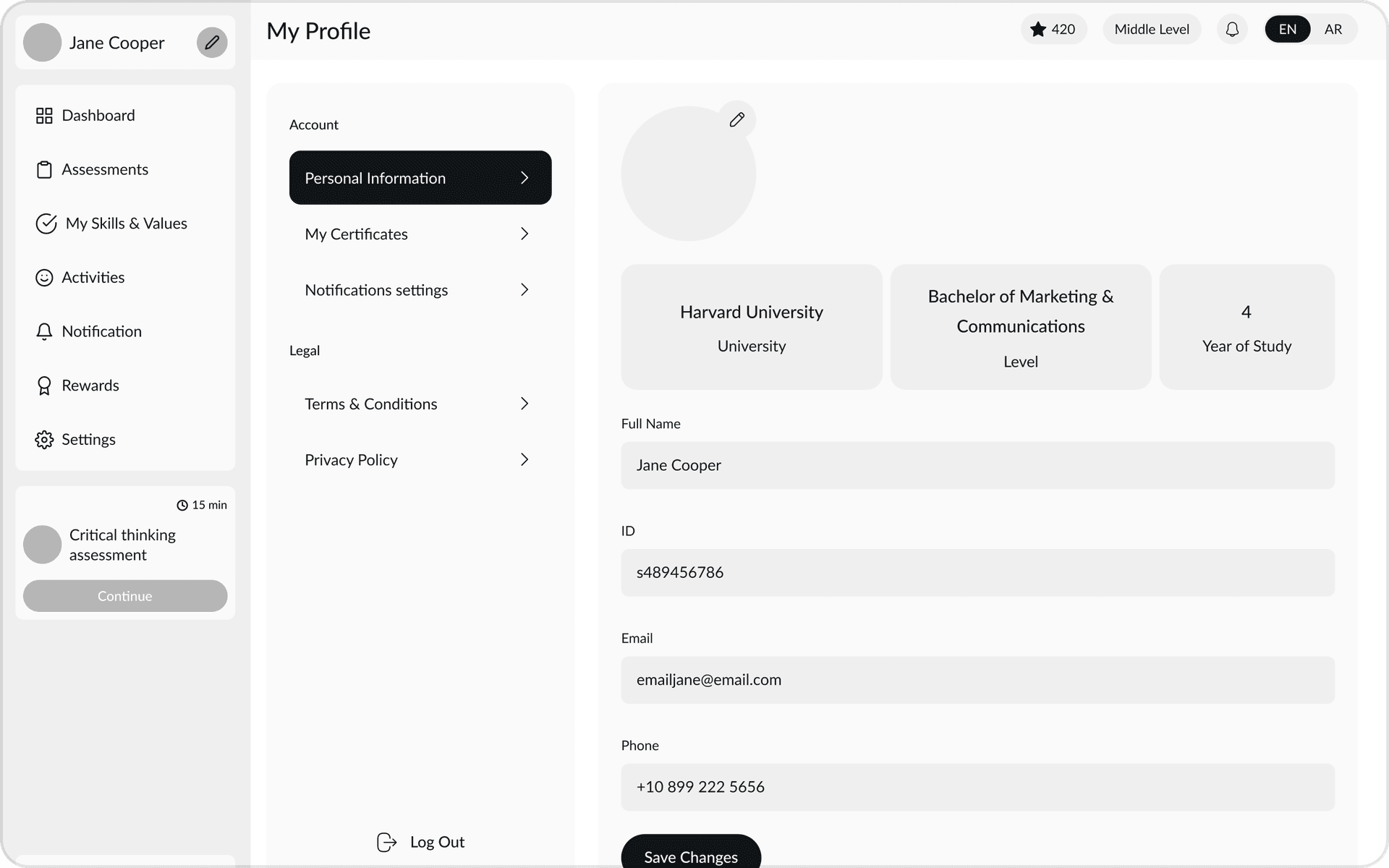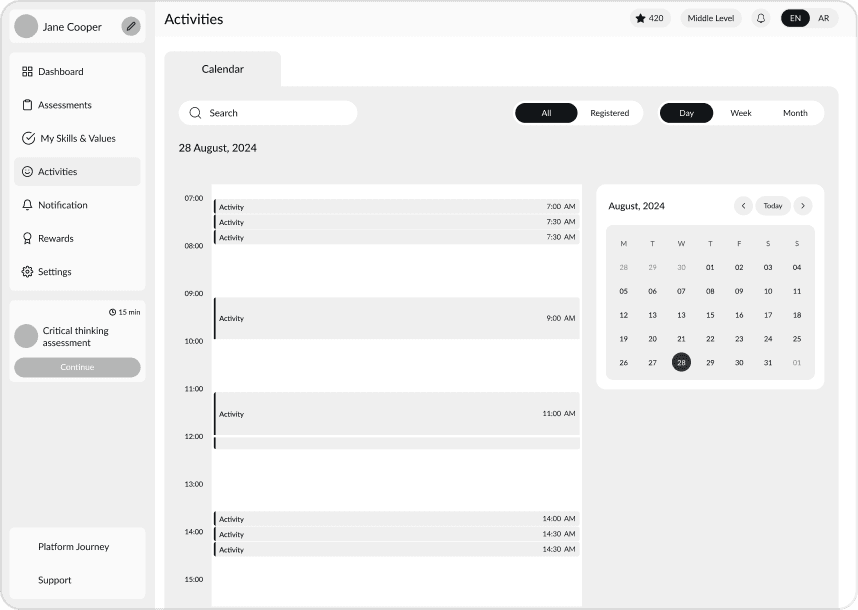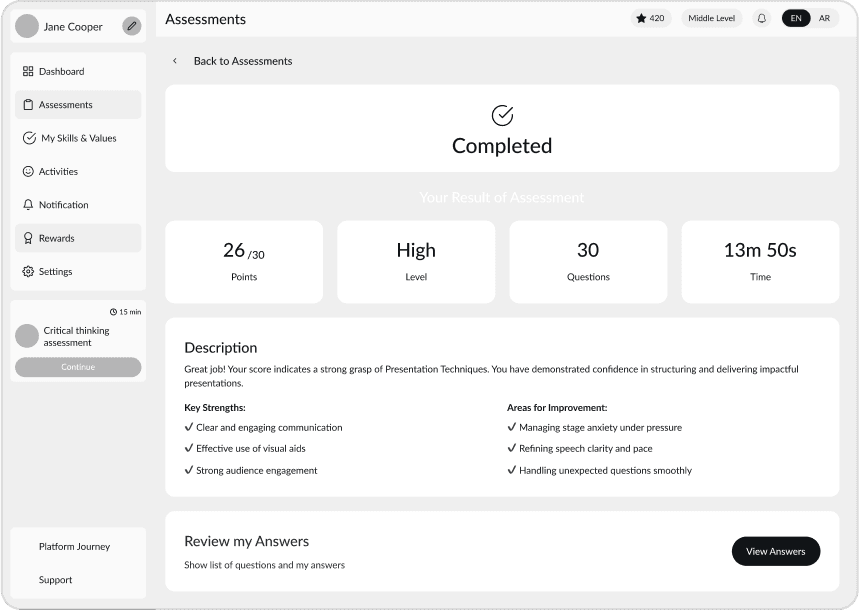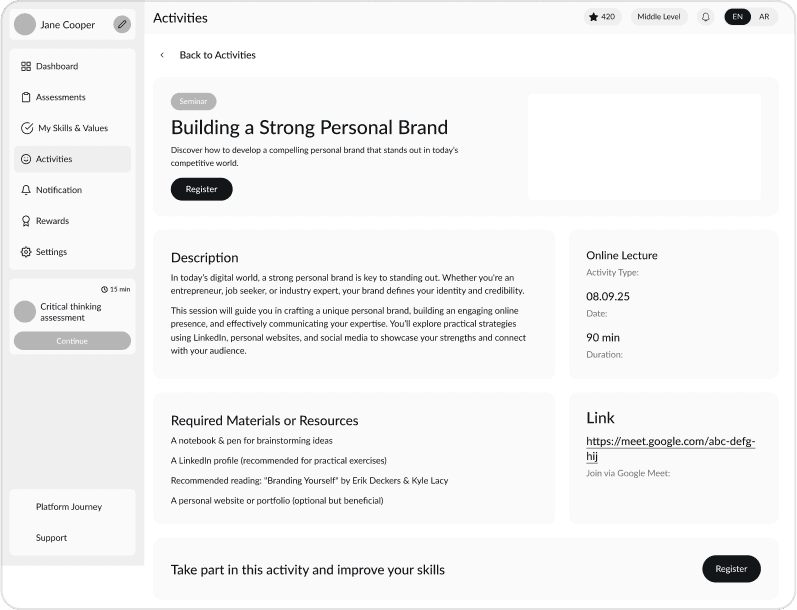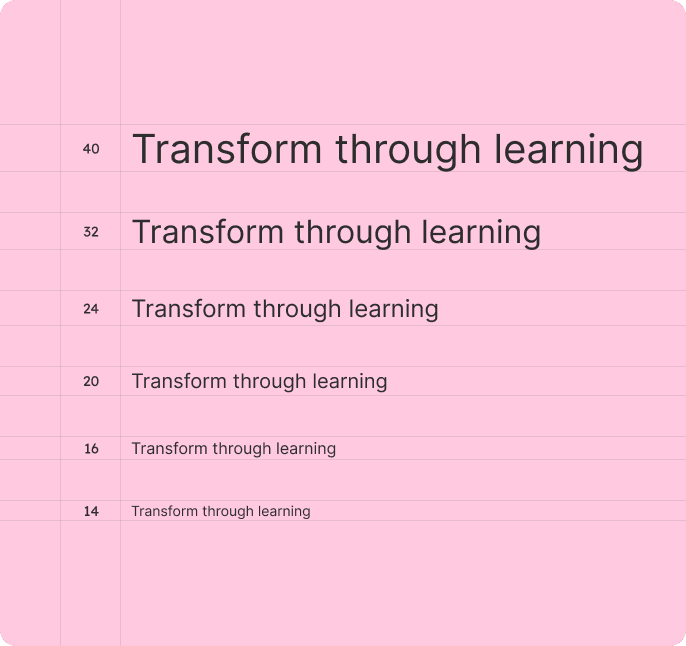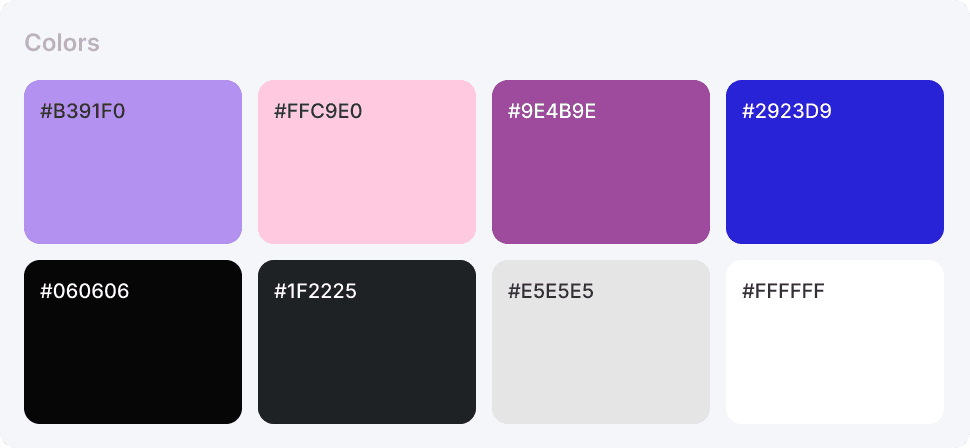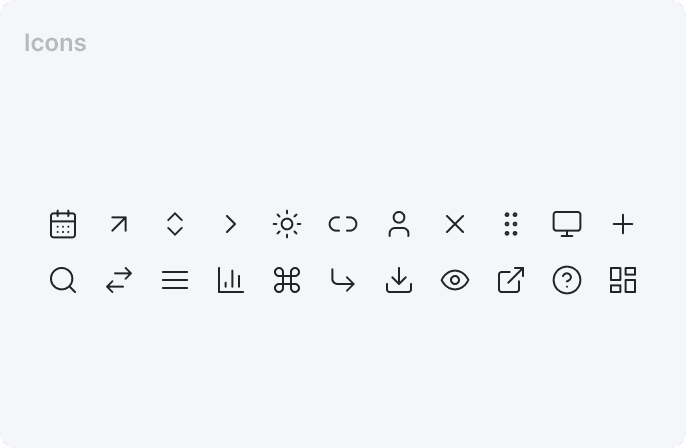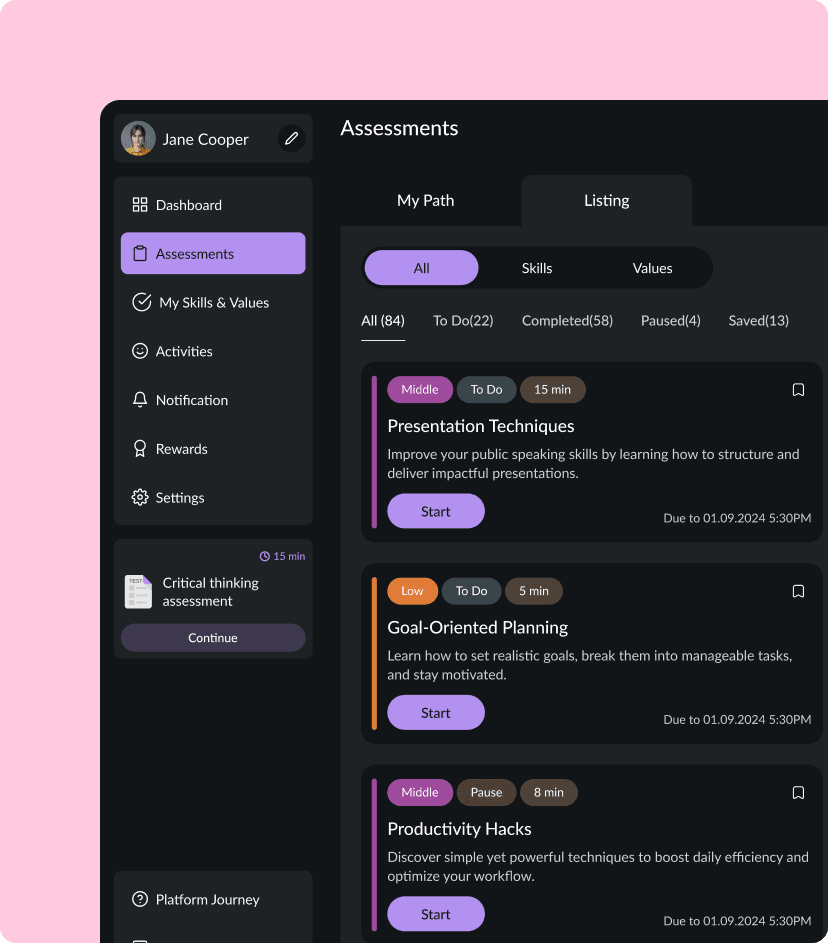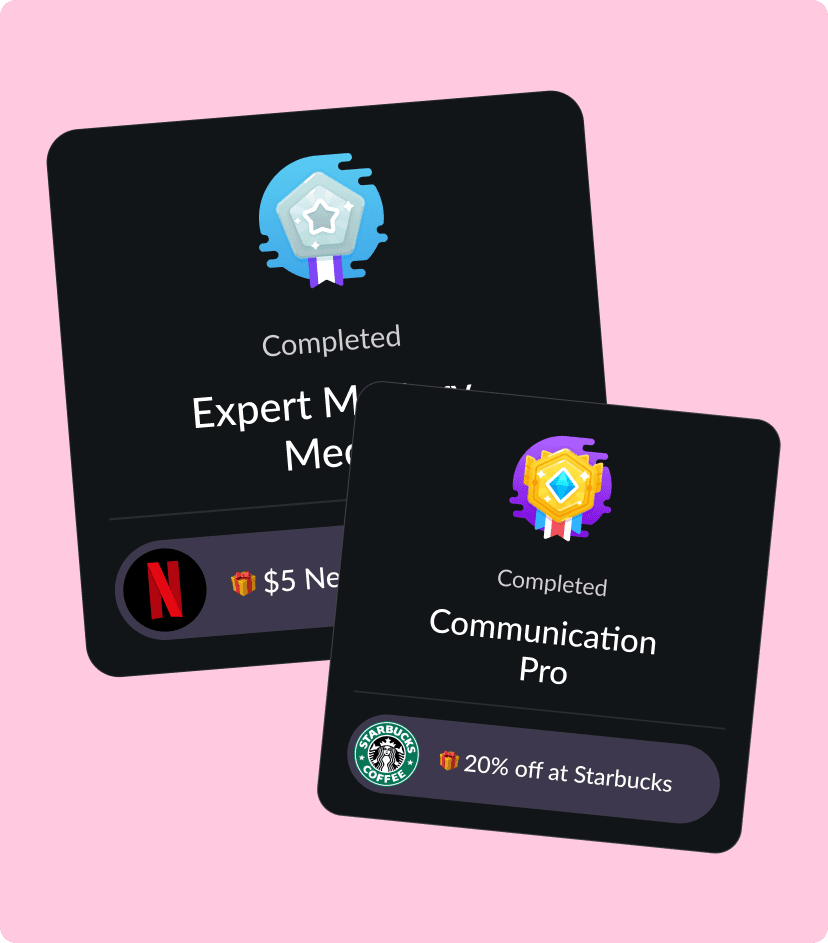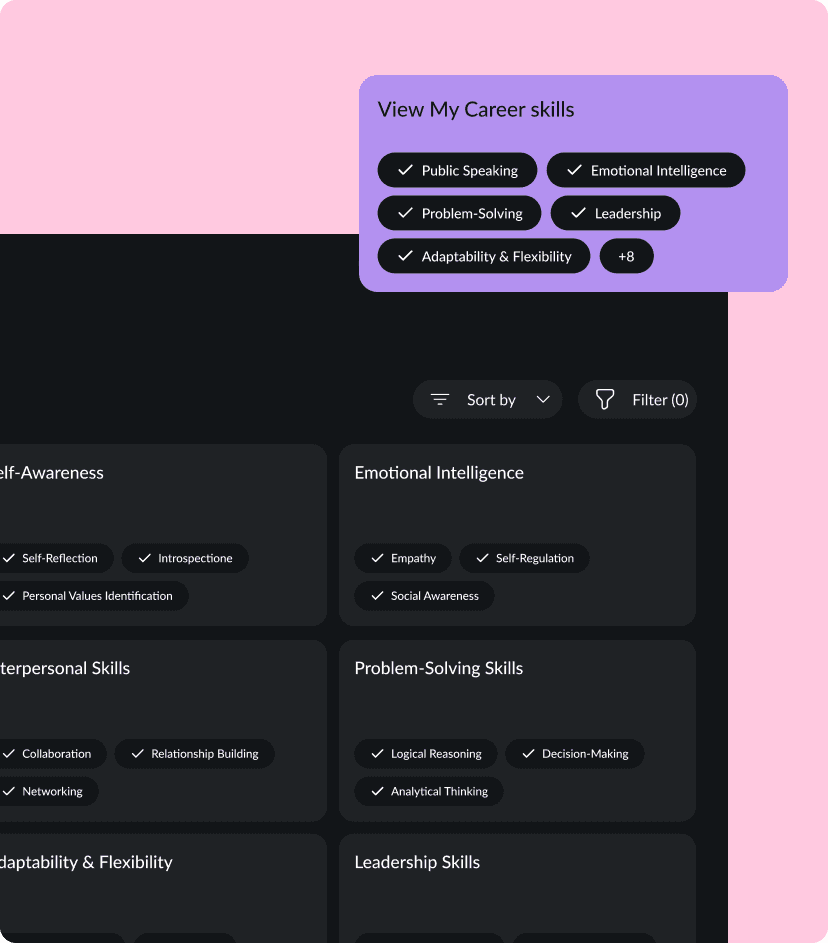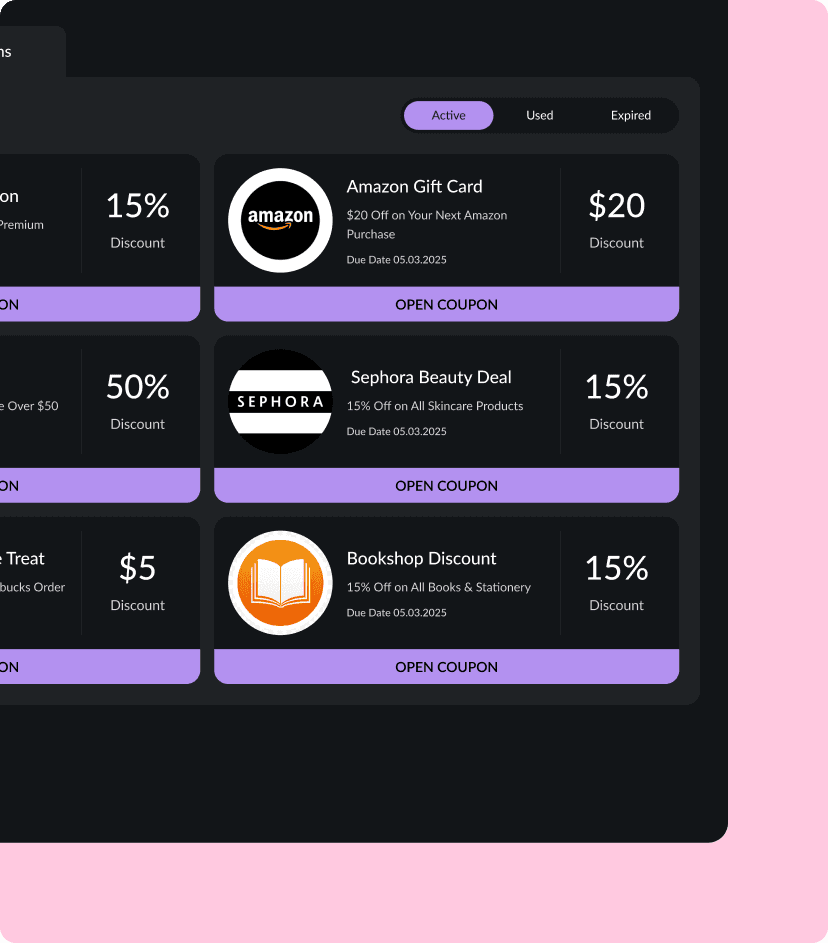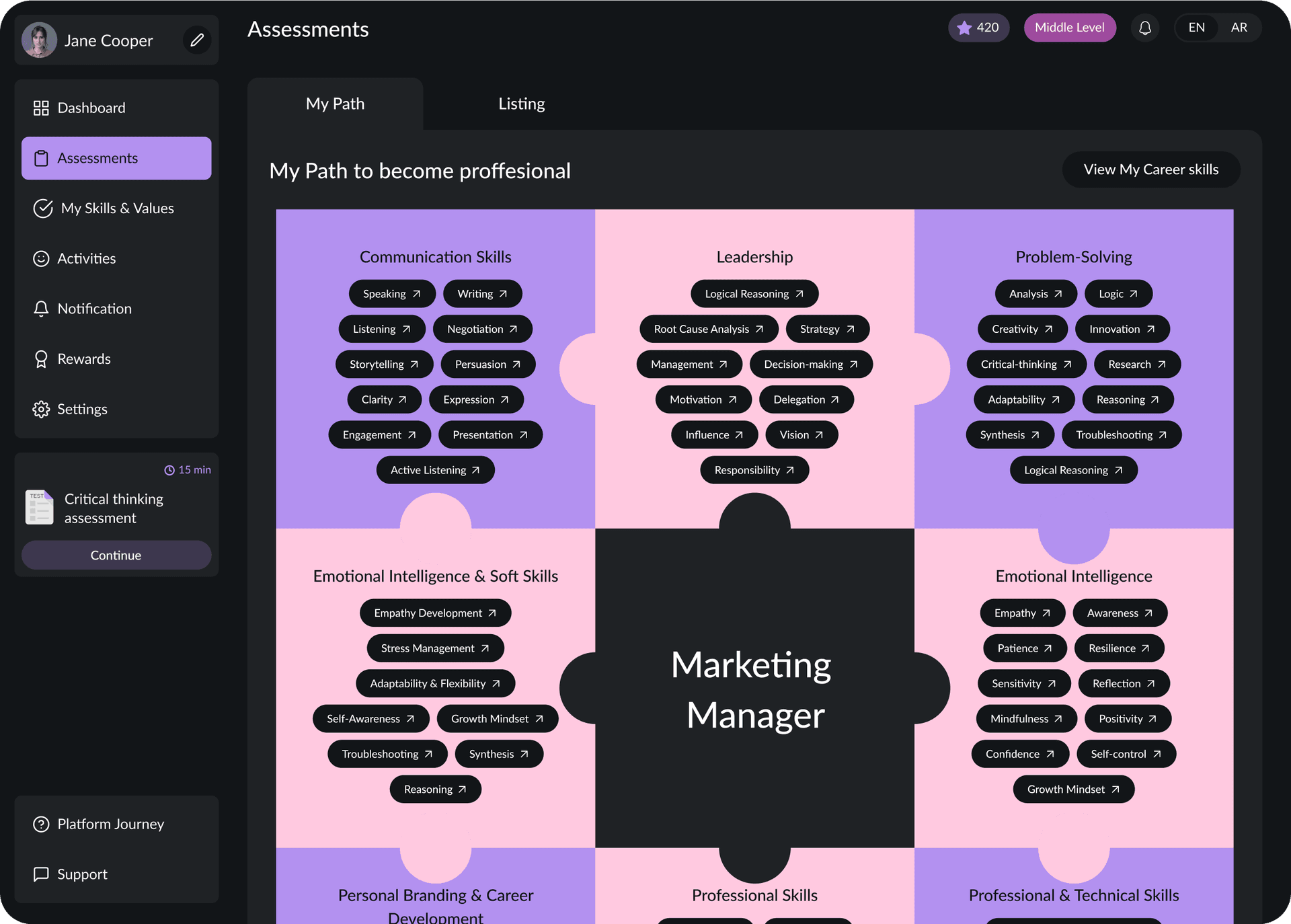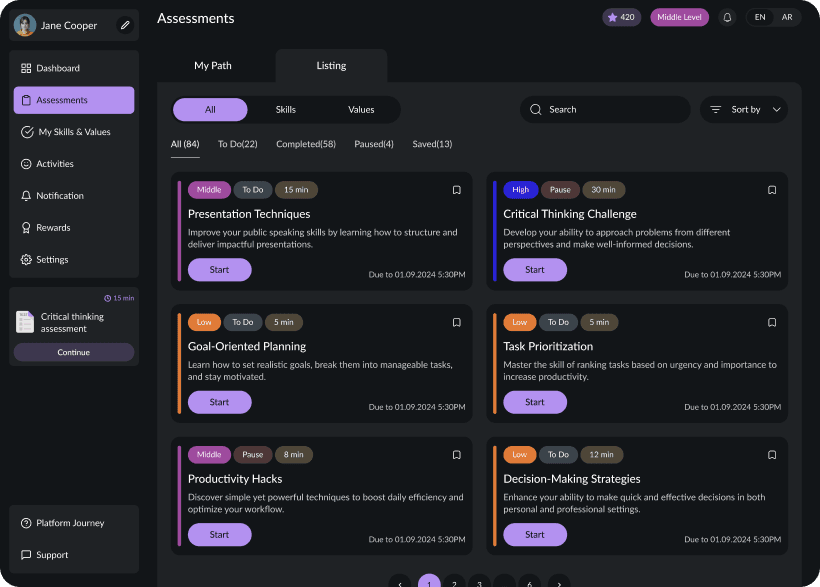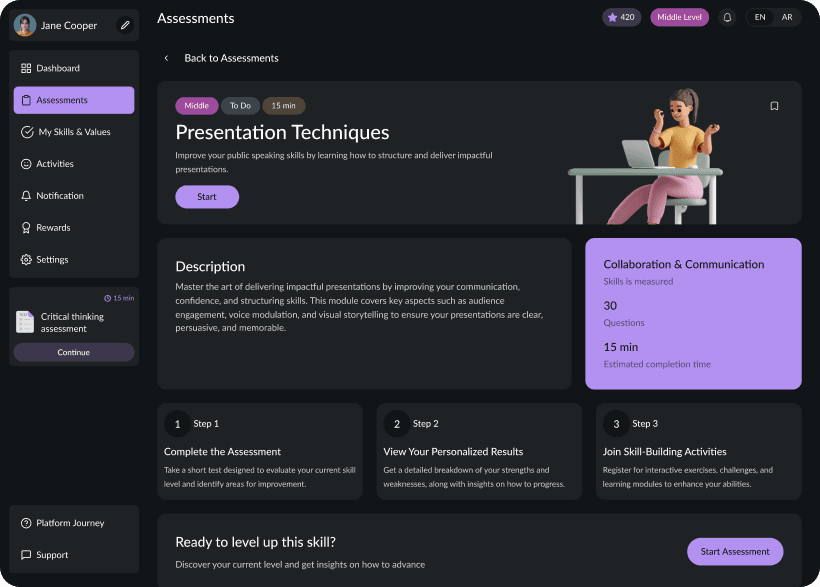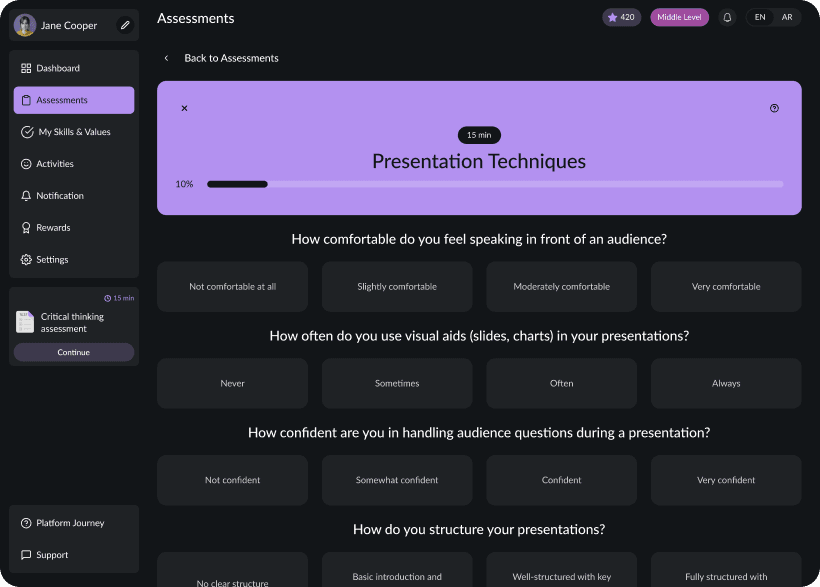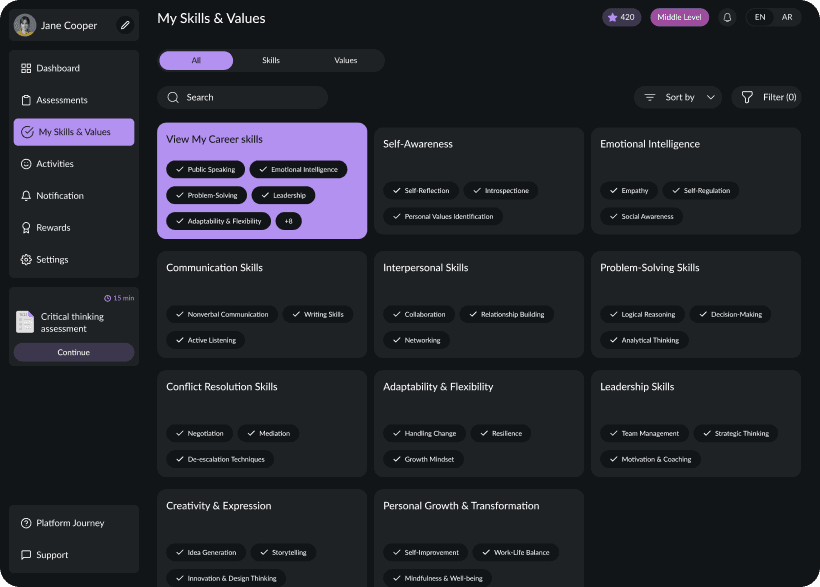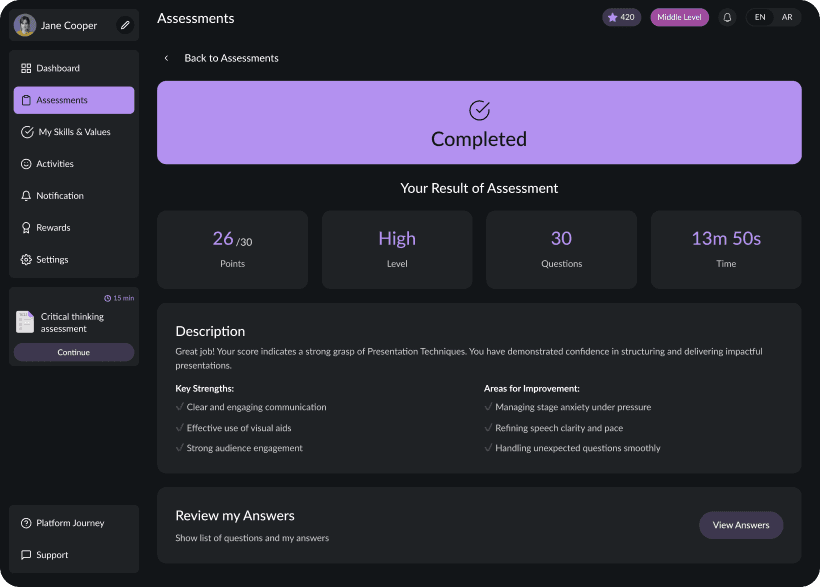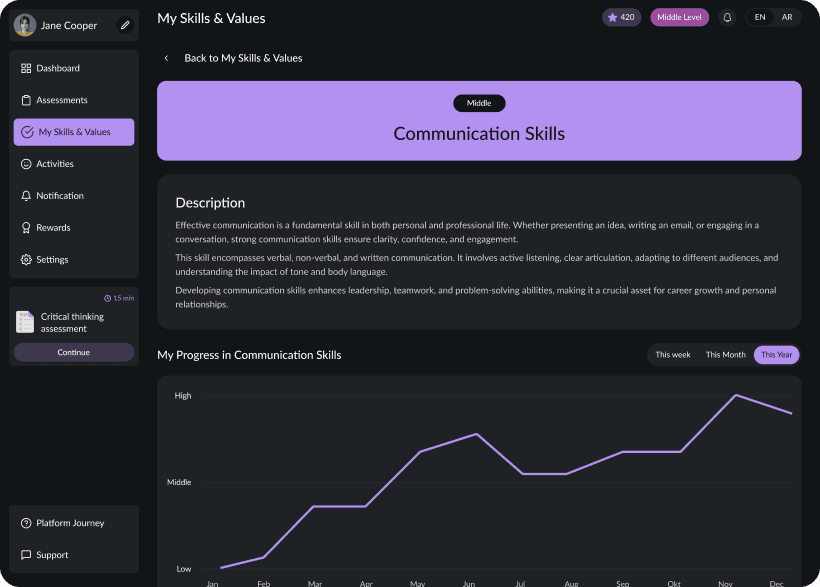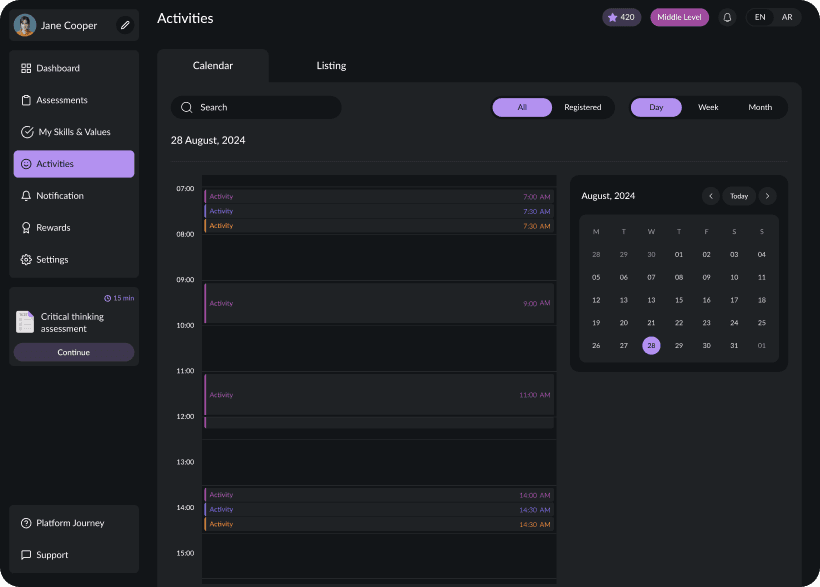
We began by immersing ourselves in the client’s vision, goals, and educational values to fully understand the direction of the platform. This phase included in-depth competitor analysis within the online learning and personal development space, as well as identifying current trends in e-learning experiences. We also conducted audience segmentation and behavior analysis to ensure the platform addressed the diverse learning needs and motivational drivers of its future users.

Next, we translated insights from our research into a clear and structured user experience by developing wireframes. These detailed layouts served as blueprints for the platform's core features, such as skill modules, assessment flows, and progress-tracking dashboards. Our goal was to prioritize intuitive navigation and eliminate friction points in the learning journey.

With the user experience mapped out, we focused on transforming the structure into visually engaging interfaces. As part of our education UX/UI design services, the UI design emphasized clarity, accessibility, and motivation—key factors in successful digital learning environments. We used modern visual language and design elements that supported continuous engagement and self-paced learning.

To ensure learning accessibility across devices, we implemented a responsive and adaptive design approach. Whether accessed on a desktop, tablet, or mobile, the platform maintained consistency in both usability and visual integrity. This flexibility allowed users to engage in self-development seamlessly, anytime and anywhere.

Finally, we developed a high-fidelity interactive prototype that mirrored the whole platform experience. This prototype enabled the client to explore the educational platform firsthand, test its core features like personalized assessments and progress indicators, and provide early feedback. It played a crucial role in validating the design before moving into development.


